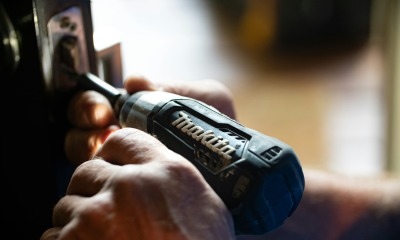Home Improvement
Yard Pests: How To Save A Grub-Infested Lawn This Spring

Spring is the time to treat your lawn for grubs. Getting rid of grubs early in their lifecycle allows you to get rid of the pests before they damage your lawn. It is important to wait until spring, rather than attempting to treat for grubs over the winter, as the ground needs to warm up. When the ground is cold the grubs are dormant and your treatment will not be as effective. Here are some ways to save a grub-infested lawn.
What Are Grubs?
Grubs are the term used for the immature stage of the Japanese Beetle. Japanese beetles have a three-year life span and can be devastating to your landscaping. While they are hard on your plants at different times, most of the damage occurs during the spring and fall of the second year of their lifecycle.
Destroying the Grub
The first stage of the Japanese beetle’s lifecycle is as a dormant grub. It begins in the fall and goes through early spring. The grub burrows deep under the soil and goes inactive. In early spring, the grub will enter the second phase of its lifecycle, where it begins feeding. This is a time when it can cause tremendous damage to your lawn. The grubs feed on the roots of your grass without ever coming to the surface of the soil. Treating your lawn with grub control from a lawn supply store during this time puts a halt to their feeding and they begin to die off.
Controlling the Beetle
During the late spring and early summer, the grub pupates under the soil. It will emerge later in the summer as an adult Japanese beetle. As an adult, Japanese beetles will cut a destructive swath across your landscape, leaving behind the skeletons of leaves they have fed on. You can apply an insect killer to your plants and lawn at this point.
Stop the Cycle
In the autumn, Japanese beetles mate and lay eggs. Applying a grub killer to the lawn at this time can destroy the larva as they hatch and begin to feed. If Japanese beetles have been a big problem in your lawn over the summer, begin treating for grubs during the summer at the same time you treat the leaves and grass with insect killer. This ensures that any eggs the Japanese beetles lay are destroyed as soon as they begin feeding.
If Japanese beetles haven’t been a tremendous issue, you can apply the grub killer once in the autumn. This should take care of any larva that is under the surface. Repeat the application in early spring to clear up any remaining grubs.
-

 Tech11 years ago
Tech11 years agoCreating An e-Commerce Website
-

 Tech11 years ago
Tech11 years agoDesign Template Guidelines For Mobile Apps
-

 Business6 years ago
Business6 years agoWhat Is AdsSupply? A Comprehensive Review
-

 Business10 years ago
Business10 years agoThe Key Types Of Brochure Printing Services
-

 Tech8 years ago
Tech8 years agoWhen To Send Your Bulk Messages?
-

 Tech5 years ago
Tech5 years ago5 Link Building Strategies You Can Apply For Local SEO
-

 Law5 years ago
Law5 years agoHow Can A Divorce Lawyer Help You Get Through Divorce?
-

 Home Improvement6 years ago
Home Improvement6 years agoHоw tо Kеер Antѕ Out оf Yоur Kitсhеn











































